Do Better to Be Better: The Feast Makers by August Clarke

August Clarke is an author who I think is actively reshaping the world of genre fiction today. Clarke's prose is breakneck and saturated and always leaves me as a reader feeling breathless. Their Scapegracers trilogy, which is easily one of my favorite young adult series, draws to a close this year with The Feast Makers. It's one of the best books I've ever read. I got to drop into the inboxes of the team that made it happen to ask them how the hell this book came to be. They were incredibly generous with their time and insights. I think y'all are gonna love this one.
After restoring their powers, Sideways just wants to get on with senior year. But the covens have convened for the trial of Madeline Kline. When this stubborn, independent witch begs the Scapegracers to save her from a cruel and unusual punishment, Sideways knows they have to get involved. It’s the right thing to do, even if Madeline did steal their soul and wear it for a time. Right?
Making an example out of Madeline seems, strangely, just as important to the most powerful covens as divvying up the Scapegracers amongst themselves. Sideways, Jing, Daisy, and Yates are reluctant to abandon what they’ve built together, but as the college acceptances (and rejections) roll in, the offer of a magical family beyond Sycamore Gorge becomes increasingly tempting.
Unfortunately, choosing a new coven will have to wait: witchfinders are gathering in town, and some of these visitors make the Chantrys seem tame in comparison. Every witch—Scapegracer or not—is about to be in grave danger.
And on top of all that, Sideways thinks they just might be in love.
Ed. note: This interview has been edited for clarity and flow.
Gailey: August V. Clarke, kick us off!
August V. Clarke, author of The Feast Makers: I wrote [The Feast Makers]! And in doing so collaborated with the wonderful Erewhon team, whom I deeply appreciate!
Gailey: What can you share about your process in writing this, the third book in the Scapegracers trilogy?
Clarke: I wish there was something more elegant to say than eating Sour Patch Kids in the shower and playing Charli XCX's How I'm Feeling Now very loudly and rotating the conclusion in my mind, but that was the situation.
Gailey: Shower Patch Time is the key part of the creative process that most people in our industry try to gatekeep. I appreciate you breaking the silence. After you finished rotating The Feast Makers in your mind, it went off to the publisher – can you tell us about your editorial experience?
Clarke: I have had a different brilliant editor every book this series (Liz Gorinsky with Scapegracers, Kat Howard with Scratch Daughters). This book was my first time working with my new editor, Diana Pho, who was so wonderful and insightful and enthusiastic out of the gate, and really embraced the project. Very grateful she helped carry it over the finish line, and very excited about the post-trilogy work we have and will do next!
Marty Cahill, Campaign Manager, Erewhon Books: [Diana] joined the team and dove right into editing this series along with August; being able to do that alone is a true gift, but that she developed an incredible rapport with August and worked with him to bring out the best in this finale, while simultaneously building the next steps in his career? There's a reason Diana Pho is a fucking legend.
Diana M. Pho, Executive Editor, Erewhon Books: I feel honored that August was excited to work together! I know changing horses midstream can feel scary for an author, but their trust and confidence in our working relationship is something I truly value. I came onboard Erewhon at the end of December 2022, and the Scapegracers trilogy was one of the titles I was taking over from the previous editor. The titular first book and its sequel, The Scratch Daughters, were my first two Erewhon reads on the job.
Clarke: The project is stronger for [Diana] having been a part of it, I am really glad the chips fell this way.
Gailey: Diana, how did you feel about joining the series as a new editor?
Pho: As I hit the ground running into edits for The Feast Makers, I was thrilled to have a role in shaping the final volume of these truly magical books. As a developmental editor, I help authors craft the strongest story possible and make sure the book reaches its ideal readership. Occasionally, I ask them to kill their darlings (only if they really, really have to).
Gailey: What helped you get into the rhythm of your new role?
Pho: Viengsamai Fetters, our newly-promoted Assistant Editor, has been an ardent fan of the series long before I came in. They helped me as I acclimated to Erewhon and gave me a lot of context about the publishing journey August had experienced beforehand. They served as the connective tissue between us both, and I’m so grateful to have Viengsamai work alongside me.
Viengsamai Fetters, Assistant Editor, Erewhon Books: It's true, I am an ardent fan of the series! When Diana joined us, I knew August would be in good hands—as Diana’s colleague, I’ve learned that I’m in good hands, too. Part of my job is to support the editorial team, which means different things on different projects; I'll help out wherever I'm needed. Often I handle administrative tasks, which can mean anything from entering metadata, to keeping our internal records up-to-date, to trying to chase down tax IDs. It's definitely the least exciting part of the job, but as an assistant, I’ve been able to learn about every step of the publishing process.
Gailey: You also make editorial contributions, right?
Fetters: I do! In this case, Diana asked for my input on the story itself as well as the cover design concepts. I also did a quick line edit on the excerpt from The Feast Makers for the Scratch Daughters paperback, drafted the discussion questions you'll see in the Feast Makers paperback, and I wrote the jacket copy (that's the bit on the book flap that tells you what the book is about).
After restoring their powers, Sideways just wants to get on with senior year. But the covens have convened for the trial of Madeline Kline. When this stubborn, independent witch begs the Scapegracers to save her from a cruel and unusual punishment, Sideways knows they have to get involved. It’s the right thing to do, even if Madeline did steal their soul and wear it for a time. Right?
Making an example out of Madeline seems, strangely, just as important to the most powerful covens as divvying up the Scapegracers amongst themselves. Sideways, Jing, Daisy, and Yates are reluctant to abandon what they’ve built together, but as the college acceptances (and rejections) roll in, the offer of a magical family beyond Sycamore Gorge becomes increasingly tempting.
Unfortunately, choosing a new coven will have to wait: witchfinders are gathering in town, and some of these visitors make the Chantrys seem tame in comparison. Every witch—Scapegracer or not—is about to be in grave danger.
And on top of all that, Sideways thinks they just might be in love.
Gailey: What are some of the big, structural, developmental editorial lifts that happened over the course of this project?
Pho: The Feast Makers tackles a lot of chewy questions about love, transformative justice, and accountability; my work was helping to guide August's thinking along those themes. Can a person truly repent past mistakes? How do characters work through their emotional traumas and hold compassion towards their wrongdoers? How can a community with different understandings of self-protection and justice help a hurt individual heal?
Clarke: Repair is better than redemption. It's a goofy semantic difference maybe, but redemption strikes me as something that impacts the kind of person you are, while repair is something you do. I think we are what we do. We are together within systems that instruct us to hurt each other and ourselves, and the only way to do otherwise is to learn and try and keep trying even if we fuck up, and help each other do the same. Do better to be better.
Pho: I love how August handled love. On top of the deep friendship the Scapegracers have for each other, this story explores the differences between family love, lust, friendship, and compassion, and how elements of all four can be held in tandem inside queer relationships. It felt very messy at times but also very relatable (and the steamy scenes worked very well).
Clarke: This series is about how in the interim of not having great answers, we still have to take care of each other. It's also about throwing the willfully harmful who benefit from this harm and have no drive to change to the wolves.
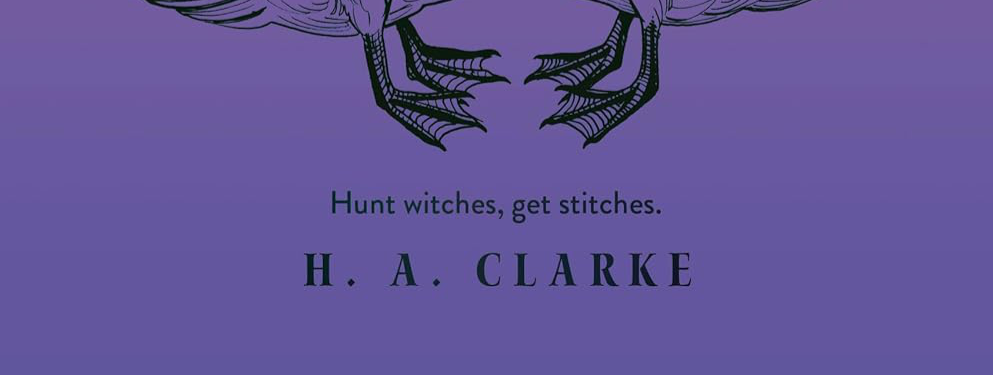
Cahill: I feel like [August and I] grew up together a bit through this journey. From sitting at a honky-tonk bar in Nashville at our first (and only conference together due to the pandemic), to navigating virtual book release, and books two and three through tumultuous times . . .
Pho: I felt like I was helping August bring these characters “home” with us in The Feast Makers, especially as society was recovering from the core pandemic period. We were beginning to see a new future, but so much uncertainty was still lingering in the atmosphere.
Gailey: Bringing these books into the world during that core pandemic period (I am stealing that phrase for my own use, thank you) must have come with a lot of tension about how much to engage with a huge amount of real-life turmoil.
Pho: The world of the Scapegracers is our world, but also feels almost like an alternate reality too, because those characters didn’t go through the ongoing real-world trauma we all had gone through. Their end cap adventures over senior year became a beacon showing us a way back to normalcy. We’re still anxious about the future! Much like how teens feel during senior year! I wanted to be sure readers could relate to Sideways’ coven on multiple levels that way.
Cassandra Farrin, Director, Erewhon Books: I love Sideways and all these weirdo kids, and as a mom of a 15- and 16-year-old myself, I feel proud to see how the characters have changed and grown throughout the series in ways that are deeply authentic to the teen experience right now; August Clarke just gets it.
Cahill: Cass Farrin and her production team read through everything, perfecting this book and each book in the series; they took each component part and made them shine across the trilogy.
Gailey: At what point does the book get into Cass’ hands?
Pho: After development, I hand the book over to our publisher’s Production development. From there, I correspond with the Production Editor and the author to make sure everyone reviews the book at every step of the process after development: copyedits, any sensitivity read feedback, and book layout (also known as first pass pages).
Farrin: I am the "nuts and bolts" person at Erewhon (aka the "mom"): I set our schedules and coordinate team-level tasks, especially for Production and, to a lesser extent, Art. On any given day, I can be up to my elbows in book design & layouts, buried in a spreadsheet that has over 100 columns of dates and deadlines for every single book on our list, or honestly just talking with various team members in a loop to problem-solve and coordinate.
Gailey: It sounds like you’re involved across the entire production process.
Farrin: I have touched this project in myriad ways that aren't immediately obvious. I've handled troubleshooting with schedules and timelines. I've worked with the printer to get the jacket effects and case materials just right and consistent across the series (not always easy when you're working with metallized stock and holographic foils...). I've stepped in as a fresh pair of eyes on pass pages and made technical corrections in proofs.
Gailey: Other than the metallized stocks and holo foils, what challenges did this one face?
Farrin: A lot has changed for Erewhon since book 1 of this series came out: The pandemic was raging when we first opened our doors, and on top of that we changed distributors, grew into a larger team, and ultimately became an imprint at Kensington. All the way through, we've fought hard to keep this series going and help it find its readers. I fell in love with The Scapegracers early on, as one of the very first books that defined what kind of books Erewhon wanted to be making. It has helped set the tone for us.
Cahill: I'm just blown away by how much this series means to readers; especially those who were of an age with Sideways and the other Scapegracers; they literally grew up with these characters, and that these books have continued to inspire such a feral and beloved response from these readers makes me so happy.
Gailey: It sounds like Erewhon and the Scapegracers series grew up alongside each other in a big way. Who else helped shepherd this series through production as both the company and the series matured?
Farrin: Production Editor Leah Marsh deserves HUGE accolades for continually showing up to take care of this book through thick and thin, not only her scrupulous care with the copyediting and proofreading process but also the evolving interior design for the series.
Leah Marsh, Production Editor, Erewhon Books: Technically I'm a contractor, but I think I've pretty much ingratiated myself into [the Erewhon] team! I've been working on the Scapegracers series almost since it started, and the books have come to mean a lot to me, as I know they have for many others. I honestly can't imagine a more perfect conclusion to the trilogy. I think I cried.
Farrin: Leah has done a beautiful job in production on these books all the way through thick and thin. Thanks, Leah, for faithfully shepherding this trilogy through production in the several half-lives of Erewhon Books.
Gailey: Leah, what can you tell us about your process?
Marsh: The main thing I do is oversee the copyediting and proofreading of the books I work on, typically by hiring freelancers and then coordinating with the editor and author to review and approve those edits. Though actually, in this case I loved the book so much I just proofread it myself.
Gailey: That is true love. How did handling the third book in the series feel for you?
Marsh: Having worked on the previous books in the trilogy, I already had a good sense of what to expect from the manuscript in terms of Clarke's crackling prose and the elements I might find that require special formatting (like text messages and emails). So it was really just very comfortable to kick off my part of the process by diving into the manuscript to reacquaint myself with my favorite lesbian witches, see what they're up to, and then sending it off to NaNá, a brilliant copyeditor who's also been with this series since the beginning.
Gailey: NaNá unfortunately had to decline comment due to scheduling constraints, but it sounds like it was deeply valuable to have a consistent eye on the series the entire way through! What strategy do you bring to prose as distinct as August’s?
Marsh: All of Erewhon's authors have beautifully distinct writing styles, so my goal during this process is to preserve and uplift each author's voice by having the text closely read for typos, inconsistencies, or any other tiny details that might distract from the reader's immersion in the story and to make suggestions in line with the existing style.
Gailey: How do you preserve voice while ironing out those wrinkles?
Marsh: I am not the grammar or spelling police (ACAB): see, for instance, the phrase ""hot big-tiddy aliens"" on p. 119. Is ""tiddy"" in Merriam-Webster? No. Am I going to change it? Also no. But what I will do is make sure the hyphen is there to clarify that it's the tiddies that are big, not (necessarily) the aliens.
(Actually, "tiddy" is in Merriam-Webster, but not for, uh, this definition.)
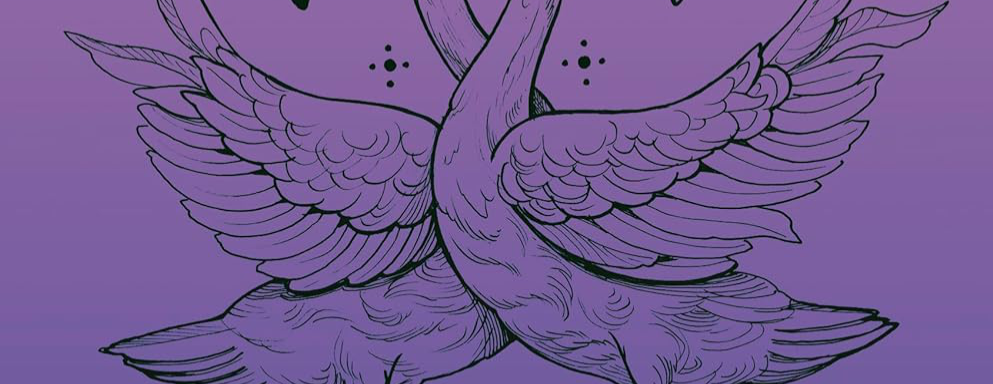
Gailey: Let’s talk marketing. How does the project go from production to public-facing?
Pho: My editorial job involves wearing multiple hats as I interact with various other departments involved: advocating various odds and ends in the author’s favor to the publisher, presenting the title to the sales & marketing team in order to strategize the book's positioning in the market, and even ideating a cover thought or two with the Art department.
Gailey: I want to know more about what it’s like presenting to sales & marketing! What are you hoping to accomplish alongside that team?
Pho: Positioning a book to market can be one of the more challenging–and invigorating–elements of my job. (Maybe I'm just biased because my first book job was in international sales & marketing!) Did you know at most traditional publishers, it could take up to two years for a book to hit the shelves after it goes into book production?
Gailey: Why is that?
Pho: It's because a lot of time is devoted to preparing a book for the sales force: international, domestic, regional, indie, online, retail, special sales, school & library, etc. It's a whole group of people all invested in selling to accounts, and each of them have a specialized skill set depending on which booksellers they work with. The editor, the publisher, and the sales & marketing teams all discuss the strategy behind convincing booksellers to stock our titles.
Gailey: How does that conversation begin?
Pho: I create different types of oral and visual presentations in a series of different sales meetings and present my titles to various members of the sales force. We start talking about books very early–some as much as 18 months before publication!
Gailey: Can you talk more about what you prepare for those presentations?
Pho: We create sales materials for reps to familiarize themselves before the reading, called tip sheets, which include the book's summary, target audience, key selling points (KSP), comparison titles, and any other information a sales rep might find helpful. The editor may also coordinate with marketing and others to generate additional sales materials down the line: sell sheets, ARCs/galleys, social media assets, promotional giveaways etc. As the editor, I present my list of books at least 3 or 4 times throughout every sales season. These meetings have a different focus, depending on which type of reps we are presenting to, and I also change how I present books accordingly. The point is by the time the sales reps hit the road (literally or virtually), they will have a set strategy about how to talk up their titles to their buyers, drawn from the information editorial and the publisher gives them.
Gailey: What happens once the sales & marketing team sinks their teeth into the book?
Cahill: As Campaign Manager for all of Erewhon's books, it is my job to raise awareness enough that readers know a book of ours is on the way, encourage them to preorder/attend events/read backlist/get to know us and our mission, and finally, when the book is on shelves, have done enough to convince them to spend their time and money on those books.
Gailey: What do you do to try to convince them?
Cahill: How we get there has a somewhat standard plan of sending our books to places like Publishers Weekly and Kirkus Magazine for early buzz, or writers and reviewers for places like Reactor, The New York Times, etc., for further publicity. From the marketing side of things, that can take the form of paid advertising, setting up book tours, appearances at literary conferences or festivals, etc.
Pho: There's a lot of things that can help create buzz among the sales force: getting great author blurbs (including early ones from booksellers & librarians), a great cover or overall design package for a book, the story's relevance to a certain target audience, the author's past sales history, or awards acclaim. The strongest, however? Having a fantastic story in the first place–sales people are devoted readers, and if they love a book, they will be even more dedicated in selling that title to buyers. Especially for a rep who might have to sell up to 300 titles during one sales call, the magic words to a buyer could be: "I read this one, and I loved it."
Cahill: Really, it comes down to finding a book's particular lightning in a bottle factor–i.e. how the reading community reacts to its announcement, cover, author, content, and engaging with that in a way that both celebrates it and helps as many readers as possible see that same lightning quality for themselves.
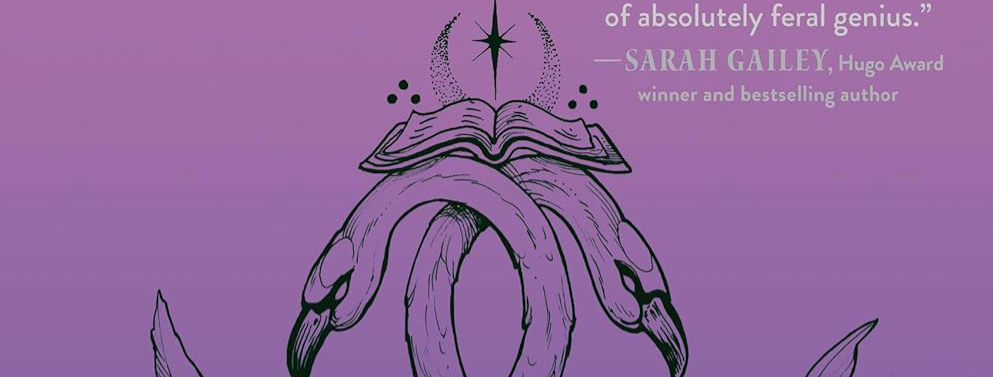
Gailey: All this, and we still haven’t gotten to the final product yet!
Farrin: It all leads to this moment where the book is out there on the shelf, and you can walk into a bookstore and hold it in your hands.
Clarke: The book object itself is gorgeous, I am very excited to hold it and experience it as a thing with weight.
Cahill: A big shout out to artist Anka Lavriv, whose stunning visuals have created a true visual language for the series; having her bring her beautiful work to these covers have imbued this series with that ephemeral OOMPH that every publicist dreams of harnessing in their work.
Anka Lavriv, Tattoo Artist and Illustrator: This project is my second time working with authors. I mostly focus on my custom tattoo work, but I’ve done a bunch of solo and group art shows, collaborations with bands, corporate brands and fundraisers. I was approached at the request of the author, who saw my tattoo work and wanted me to do the cover.
Clarke: I am so damn lucky with these covers, they're soooo pretty.
Gailey: Anka, what inspired your design for these covers?
Lavriv: As a person who’s really inspired by the esoteric, I was excited to participate in the project and loved the storyline of the series. I grew up in Ukraine, right after the Soviet Union collapse, where spirituality in any form was forbidden and persecuted, so my parents' generation had a whole underground network of translating and copying books on spirituality, esotericism and occult. I grew up inspired by all things magical–they seemed especially alluring amongst the poverty and grayness of my reality. So when I found out the books of the series focused on young witches discovering the world through magic, stepping into their power and queer love, I was very excited to be a part of something like that.
Gailey: What was it like diving into the design process?
Lavriv: I really enjoyed working with the whole team–the author usually gave me 3-4 ideas based on the important points of the story line and I sketched out thumbnails for the team to review. It was always exciting to see which direction they would want to go for and I felt like I was given a great amount of artistic freedom, which is very important to me. I think my personal favorite cover is Scratch Daughters, I absolutely loved how the final design and color scheme complimented my illustration.
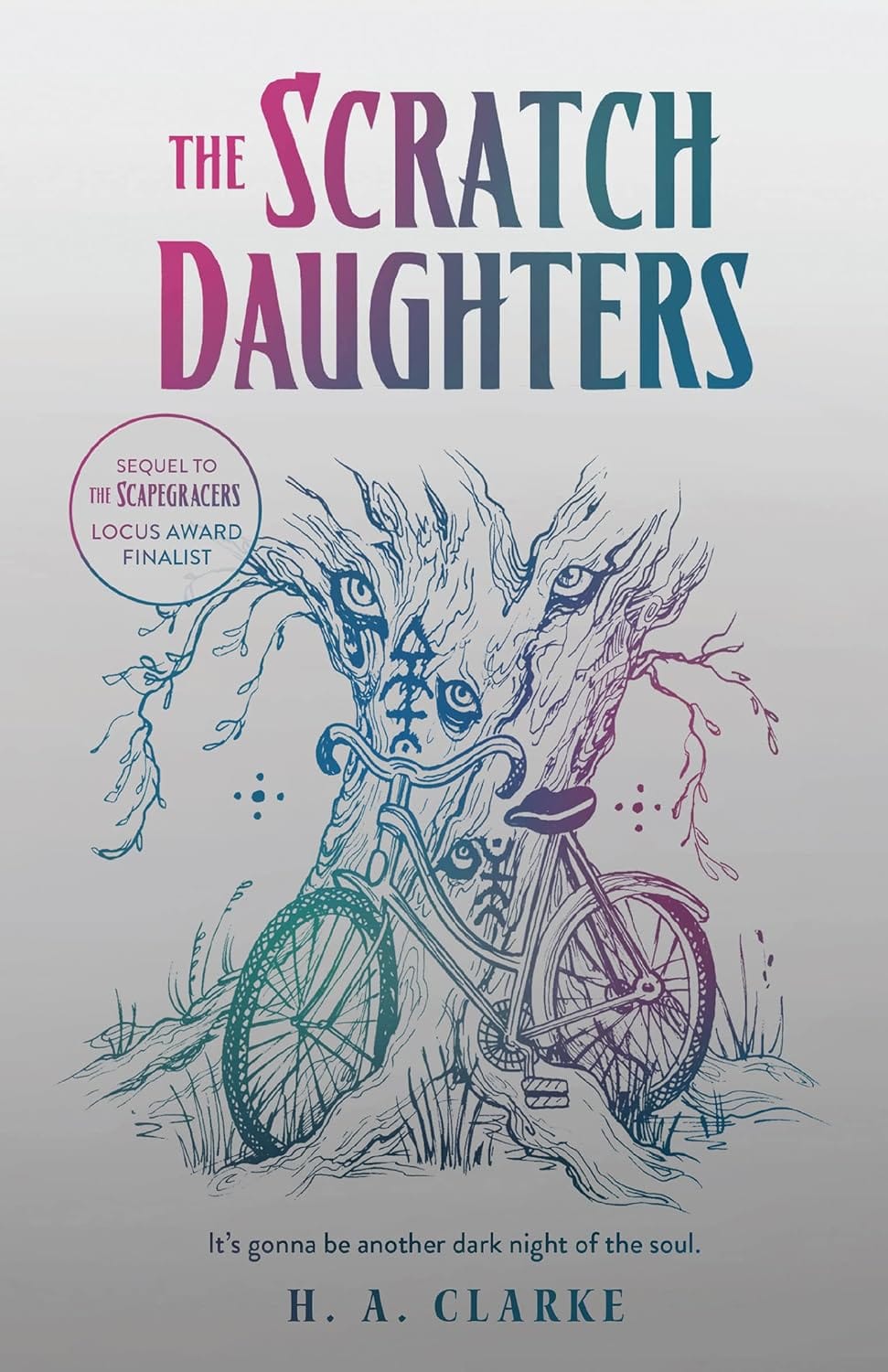
Fetters: This is such a small detail, but I love the combination of fonts we use on [The Feast Makers] package; I think they work so well together!
Gailey: How did the book design end up coming together?
Marsh: Most publishing houses have a separate interior design team, who choose the fonts, graphical elements that go on the inside of the book, etc., and then they'll outsource the typesetting (i.e. turning the book from a Word document into actual nicely laid-out book pages in accordance with the established design), but I actually get to do that process myself at Erewhon. I believe Dana Li did the series design for Scapegracers, so I was working off the excellent foundation she laid, but essentially, I handle the inside of the book during every stage from when the editor is finished to just before it goes to the printer, where Cassandra [Farrin], our director, will give it a final check to make sure everything looks good.
Farrin: After I posted the files to the printer for The Feast Makers, I wrote the following little note internally to the Erewhon team–
THE FEAST MAKERS: Off to press!
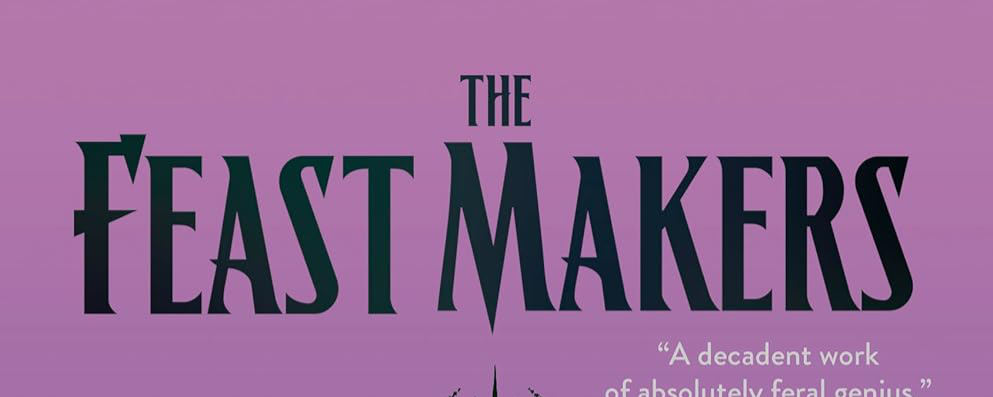
Gailey: How does it feel to be wrapping up the Scapegracers series?
Clarke: This is the end! This is my first series, and I am grateful to it for archiving my coming of age headspace and showing me how much I love language.
Fetters: I was struck with how much August has grown as a writer since the first book. It's subtle, especially because Sideways grows and changes over the course of the series, but it was invigorating. It feels like every book from now on will be better than the last, and that's incredibly exciting from an author who was pretty darn good to start off with. I finished this manuscript in one sitting.
Pho: Seeing August’s writing mature over the course of three books is something I’m proud to witness; they did the craft work on constantly thinking, learning, and growing to come to this point.
Marsh: When I receive a manuscript for an author I haven't worked with before, or for a standalone or first book in a series, it's always exciting to open it and scroll through to explore the world, the voice, the characters; by contrast, when Feast Makers hit my inbox, I was excited because it felt like returning to a favorite spot, a place I already know and love.
Cahill: I've been working with August since I first started with Erewhon when he was a very young author and The Scapegracers was one of our very first books! Released at the start of the pandemic, no less. We've gone through a lot, and seeing us reach the conclusion of the story August set out to write five/six years ago, and to have him stick the landing in such an effortless, beautiful way? Yeah. Damn proud of him.
Fetters: I have a soft spot for the Scapegracers series for a number of reasons, not least of which is that these books are the reason I even applied for this job! But apart from my career-launching affection for the Scapegracers, August has crafted a wonderful conclusion to a trilogy that I still never want to end.
Farrin: This is the part where I tell you I'm not crying, you’re crying about the moment that marks the end of an era (at least for us production folks). Scapegracers forever!
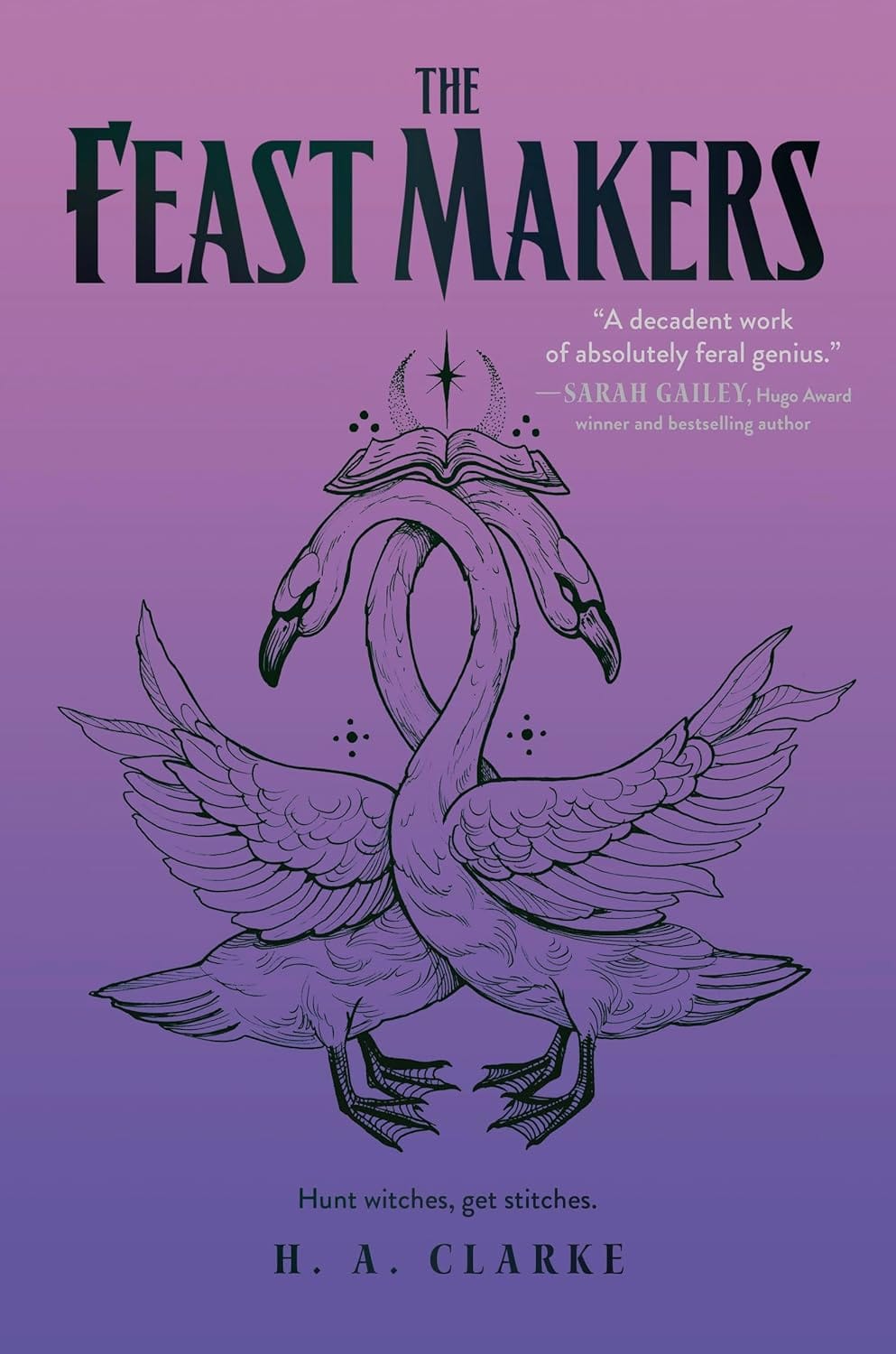
Gailey: With the series at an end, how do you feel changed by these books? How do you feel about their place in a changing, often-frightening world?
Fetters: The first book [in this series] shows us a world in which difference is quite literally magic, and then we move into a painful reckoning with intergenerational trauma and having to grapple with hurting people we love, and then finally The Feast Makers is a joyous, bittersweet exploration of restorative justice, solidarity, and community. They're smart books that respect their readers, and ask them "What if things could be better? Well, they can–and will, if we have anything to do with it.”
Clarke: There are a fistful of moments in this book I wrote to retroactively staple some teenage wounds shut. This book is tinged with pandemic insanity but keeps that spark of teenage pre-transition me's righteous hope.
Pho: There is so much joy and celebration by the end. As a queer person, I’ve been feeling the political necessity of using joy as fortifying armor against today’s bigotry and discrimination against queer and trans people. I hope others experience that too in the read.
Fetters: I live in Ohio, where queer and trans rights are urgently under threat. How wonderful to read about these punky, brave teens in a place like Ohio, who have community and loved ones and people who will fight alongside them. The Feast Makers is not cozy escapism–it doesn't shy away from politics or conflict–but the series has a foundation of certainty that we can carve out a place for love and care, even under systems and people determined to oppress us. That shining hope is exactly what makes the Scapegracers special.



Member discussion